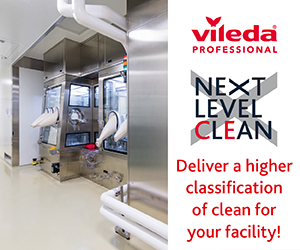To be safe for use in a cleanroom or other critical environment, particle counters must meet certain ISO specifications. ISO 21501-4 is specifically designed for light scattering airborne particle counters. Manufacturers must tightly control the size, shape, and refractivity of particles when calibrating particle counters to meet this specification.
The calibration of a particle counter influences many of the measurements it can perform. ISO 21501-4 provides requirements related to each of these measurements.
Size calibration
A particle counter needs to be able to discriminate signal noise from actual particles on the smallest measurement channel as well as correctly identify and size larger particles. At a minimum, the signal to noise ratio of a channel should be 2:1.
In a cleanroom, it is critical to accurately size particles to keep the space safe and ISO compliant. In air quality applications, estimates for mass based on particle sizes and concentration rely on the measurements of a particle counter being as accurate as possible.
Size setting
A user needs to be able to set up intermediate measurement sizes between the calibrated sizes. These intermediate sizes need to be accurate within ±10% of the actual threshold.
In a cleanroom, the sizing of all channels must be accurate enough for intermediate channels to be reasonably accurate. In air quality applications, sorting by intermediate sizes relies on having a large number of accurate channels.
Counting efficiency
The measurements of a particle counter need to closely match those of a NIST traceable instrument when sampling the same air stream. The counting efficiency of the particle counter is verified to ensure that all particles within the sample air stream are being detected.
In a cleanroom, satisfactory counting efficiency performance ensures that particle counts are accurate and similar to a NIST traceable instrument. In air quality applications, this guarantees instruments from different vendors report similar results under the same condition.
Size resolution
The maximum width of the calibration histogram must be 15% or less of the height bin for a channel specified by the user. The goal of this is to maintain significant separation between calibrated sizes so the particle counter can tell the difference between particles of similar sizes.
In cleanrooms, this makes it easier to accurately differentiate sizes of particles. In air quality applications, sizing particles accurately simplifies correctly estimating mass.
False count rate
Manufacturers must ensure particle counters are not falsely detecting particles in clean air. Particle counters must return a sufficiently low particle count for air samples with no particulate matter - i.e. air that has passed through a HEPA filter.
In cleanrooms, users rely on particle counters to measure in very clean environments, so even a small number of false counts can cause a problem. In air quality applications, false counts become a problem when they make up a significant percentage of counts and impact estimate of mass.
Maximum particle number concentration
Manufacturers are required to specify the maximum concentration in which the particle counter can operate while maintaining an accuracy of ±10%.
In cleanrooms, this measurement is rarely of use. In air quality applications, this measurement is crucial because particle counts can soar in many industries, so the particle counter must be capable of operating in environments with high particle concentrations.
Sampling flow rate
The particle counter must maintain the sampling flow within 5% of a target flow rate. If a particle counter is unable to do so, it should report a flow error.
In cleanrooms and air quality applications, the flow rate must be carefully controlled and monitored to report accurate results.
Sampling time
Sampling periods must be controlled for accuracy, which seldom is an issue with today's microcontrollers.
Response rate
When an instrument is moved from a dirty environment to a clean one, it needs to quickly respond and report the clean air condition.
In cleanrooms, this response can be critical so that a user receives quick feedback of the condition of the environment, such as when spot checking with a handheld unit. In air quality applications, instruments in fixed locations need to recover quickly from an event with elevated particles and correctly report if and when particulate matter levels have returned to normal.
Calibration interval
Manufacturers are required to suggest a calibration interval for the unit and perform at least the following: size calibration, size resolution, and counting efficiency/sampling flow rate calibration. Calibration should be performed at an interval equal to or shorter than one year, and requirements should be met during the calibration interval.
Setra's line of particle counters and air quality monitors, such as the SPC5000 and AQM7000 meet and exceed all of the ISO 21501-4 requirements.




